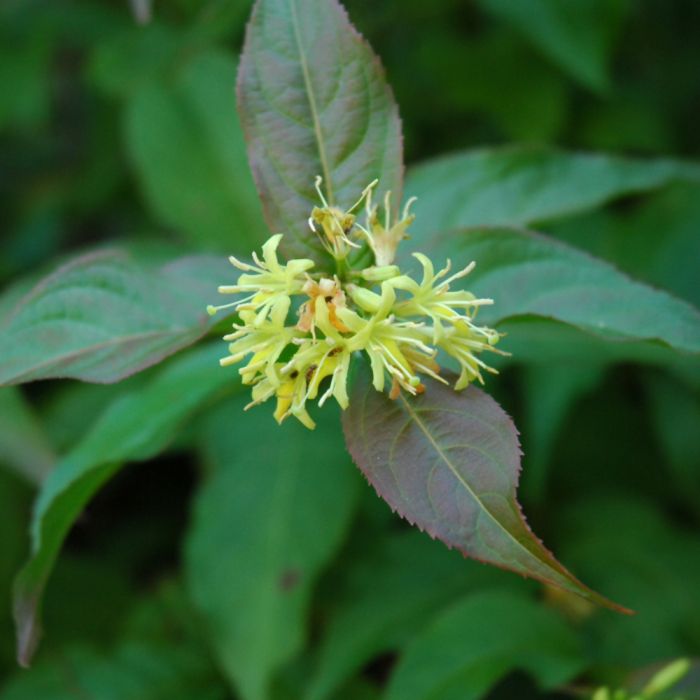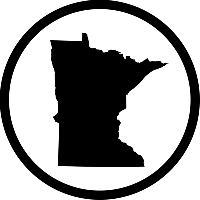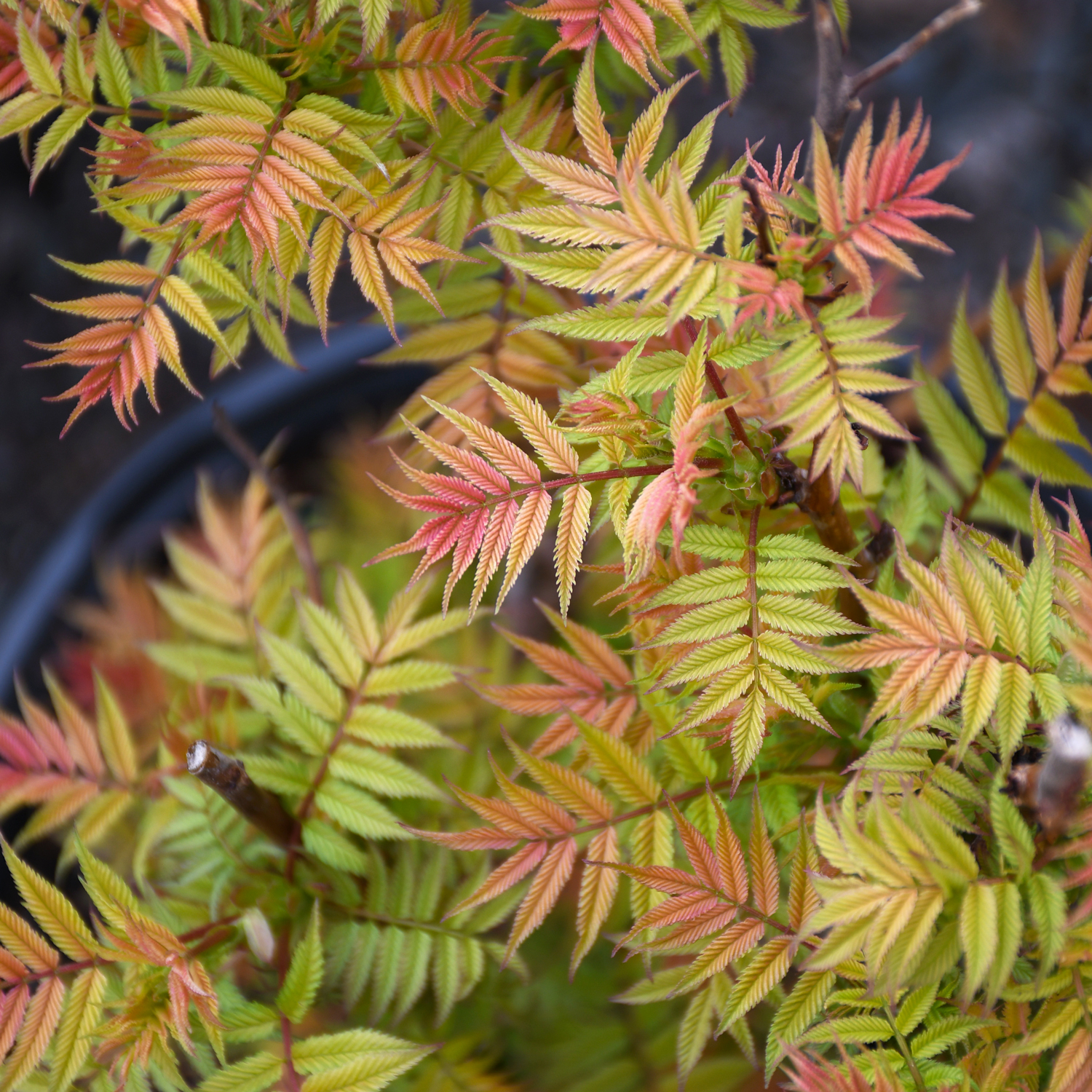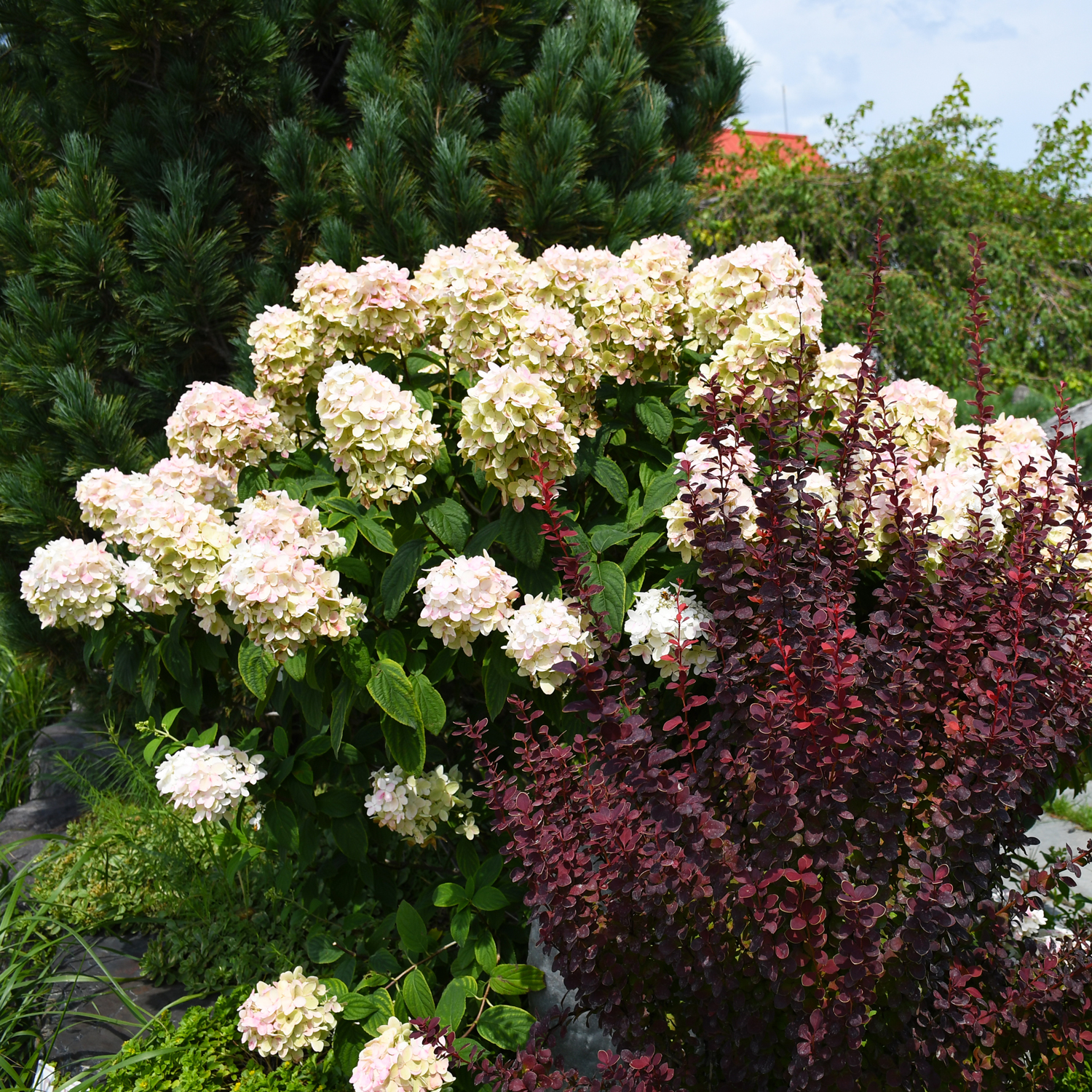Diervilla, Northern Bush Honeysuckle 'Dwarf'




- Sun Preference
- Full-Sun, Part-Sun
Description
Tough, native shrub with bronze green foliage used for naturalizing, slopes, or mass plantings. Small yellow flowers in late spring. Tolerates shade well, red fall color.
Minnesota's Largest Selection of Shrubs
Elevate your landscaping with Gertens' unmatched variety of shrubs! Selecting the right shrubs for your backyard can enhance its beauty and functionality. Consider factors like sunlight, soil type, and mature size when choosing shrubs. For sunny areas, flowering shrubs like roses or hydrangeas can add color and charm. In shady spots, opt for shrubs like azaleas or hostas. Evergreen shrubs provide year-round interest and privacy, while deciduous shrubs offer seasonal color changes. At Gertens, we offer a wide selection of shrubs to suit every backyard need.
Details
Height: 4 feet
Spread: 4 feet
Sunlight: ![]()
![]()
Hardiness Zone: 3a
Other Names: Dwarf Bush Honeysuckle
Description:
A good durable utility shrub with bronze tinged foliage and small yellow flowers; no particularly overwhelming ornamental features, but overall trouble-free, tolerant of adverse conditions; good in massing
Ornamental Features
Bush Honeysuckle has attractive dark green foliage which emerges burgundy in spring. The pointy leaves are highly ornamental but do not develop any appreciable fall color. It has lemon yellow trumpet-shaped flowers along the branches in early summer. The fruit is not ornamentally significant.
Landscape Attributes
Bush Honeysuckle is a multi-stemmed deciduous shrub with a more or less rounded form. Its relatively coarse texture can be used to stand it apart from other landscape plants with finer foliage.
This shrub will require occasional maintenance and upkeep, and is best pruned in late winter once the threat of extreme cold has passed. It is a good choice for attracting birds and butterflies to your yard. Gardeners should be aware of the following characteristic(s) that may warrant special consideration;
- Suckering
Bush Honeysuckle is recommended for the following landscape applications;
- Mass Planting
- Hedges/Screening
- General Garden Use
- Naturalizing And Woodland Gardens
Planting & Growing
Bush Honeysuckle will grow to be about 4 feet tall at maturity, with a spread of 4 feet. It tends to fill out right to the ground and therefore doesn't necessarily require facer plants in front. It grows at a medium rate, and under ideal conditions can be expected to live for approximately 20 years.
This shrub does best in full sun to partial shade. It is very adaptable to both dry and moist locations, and should do just fine under average home landscape conditions. It is not particular as to soil type or pH. It is highly tolerant of urban pollution and will even thrive in inner city environments. This species is native to parts of North America.
| SKU | Container Size |
| S1220 | #2 Container (2 Gallon) |
| S1230 | #5 Container (5 Gallon) |
* Not all container sizes may be available at this time. See store for details on specific container size availability.
Dwarf Bush Honeysuckle | Diervilla lonicera
Height: 4 feet
Spread: 4 feet
Sunlight: full sun to partial shade
Hardiness Zone: 3a
Other Names: Bush Honeysuckle
Brand: Gertens
Description:
A good durable utility shrub with bronze tinged foliage and small yellow flowers; no particularly overwhelming ornamental features, but overall trouble-free, tolerant of adverse conditions; good in massing
Ornamental Features
Dwarf Bush Honeysuckle has attractive dark green deciduous foliage which emerges burgundy in spring on a plant with a round habit of growth. The pointy leaves are highly ornamental but do not develop any appreciable fall color. It has lemon yellow trumpet-shaped flowers along the branches in early summer.
Landscape Attributes
Dwarf Bush Honeysuckle is a multi-stemmed deciduous shrub with a more or less rounded form. Its relatively coarse texture can be used to stand it apart from other landscape plants with finer foliage.
This shrub will require occasional maintenance and upkeep, and is best pruned in late winter once the threat of extreme cold has passed. It is a good choice for attracting birds and butterflies to your yard. Gardeners should be aware of the following characteristic(s) that may warrant special consideration;
- Suckering
Dwarf Bush Honeysuckle is recommended for the following landscape applications;
- Mass Planting
- Hedges/Screening
- General Garden Use
- Naturalizing And Woodland Gardens
- Planting & Growing
Dwarf Bush Honeysuckle will grow to be about 4 feet tall at maturity, with a spread of 4 feet. It tends to fill out right to the ground and therefore doesn't necessarily require facer plants in front. It grows at a medium rate, and under ideal conditions can be expected to live for approximately 20 years.
This shrub does best in full sun to partial shade. It is very adaptable to both dry and moist locations, and should do just fine under average home landscape conditions. It is not particular as to soil type or pH. It is highly tolerant of urban pollution and will even thrive in inner city environments. This species is native to parts of North America.
More Information
| Gerten Grown Plants | Gerten Grown Plants |
|---|---|
| MN Native Plants | MN Native Plants |
| Sun Preference | Full-Sun, Part-Sun |
| Mature Height (Range) | 2 - 5 feet |
| USDA Hardiness Zone | 3, 4, 5, 6, 7 |
| Common Family Name | Bush Honeysuckle |


